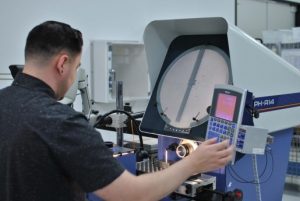 Consumers today expect high quality products that perform as expected time and time again. Unfortunately, companies often struggle to meet consumer demand.
Consumers today expect high quality products that perform as expected time and time again. Unfortunately, companies often struggle to meet consumer demand.
Testing finished products helps catch potential problems that consumers might experience after purchase. However, testing shouldn’t only take place at the end of production. Testing each component throughout production helps catch issues sooner when they are easier to fix.
Regular testing provides important information about materials, prototypes, and product samples. This information can help engineers, designers, and production managers meet the requirements of regulatory agencies, evaluate product design, and verify a production process.
Proving Compliance
Products used in critical applications such as those used by the medical, aerospace, and defense industries must meet extremely strict requirements for both quality and reliability. This is because failure of these products could cause harm or affect the livelihood of the people that use them.
In order to prevent problems, government agencies set compliance guidelines that manufacturers must meet prior to sale. Companies responsible for the creation of certain products must adhere to these guidelines which include test procedures used to prove compliance.
Material Testing
The quality of materials used is as, if not more important, than the processes used to produce new products. With so many different types of materials available, it can be extremely difficult to know which type is best for each application or use. Testing materials helps manufacturers determine whether a specific material is appropriate for its intended application. This can have a significant impact on the quality and reliability of finished products.
Design Improvements
Regular testing helps locate areas that could benefit from improvement. This might include a simple change of material type, or it could mean changing the design completely. It’s much better to make these changes before or during production than waiting until you’re faced with a defective product or prototype.
There are several different ways to test products and materials. The method used depends on the intended use of the finished product.
Working with a quality contract manufacturer ensures testing takes places and potential issues are resolved quickly and efficiently. This helps prevent defective products which can lead to costly returns and/or recalls. Please contact us to learn about our testing policies.



